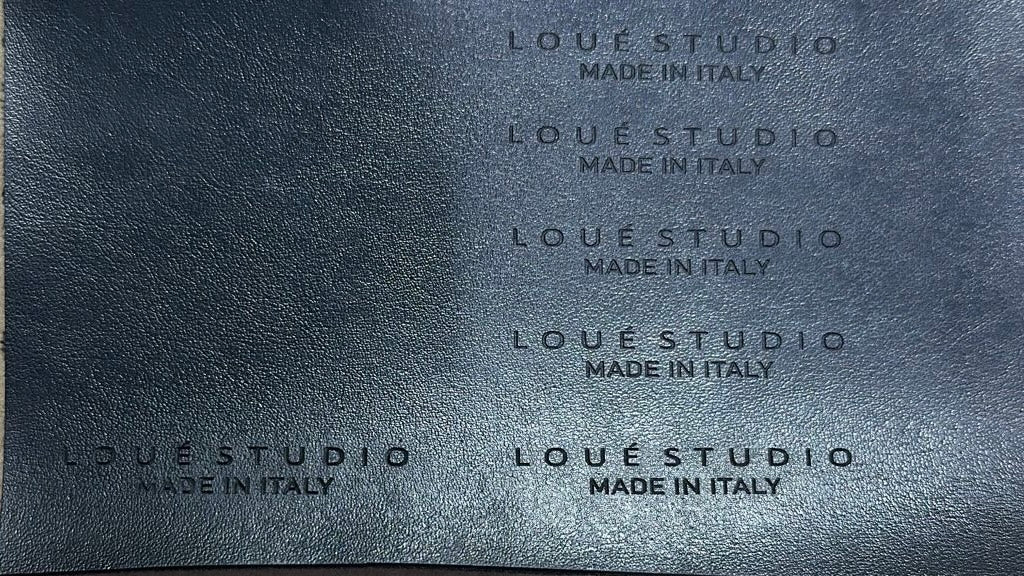The Mano Pochette is our first handbag and it’s crafted from MIRUM®, a plant-based, plastic-free alternative to leather, in a two-person atelier in Ubrique, Spain.
It took 2.5 years of development, 7 samples, 3 factories in 2 different countries to bring it to life. It’s special in so many ways.

WHY I MADE IT
I wanted to create a chic, compact handbag that fits all the essentials and transitions seamlessly from day to night. Not just another bag, but one that brings together innovation and craftsmanship in the most thoughtful and exciting way.
The name “Mano” comes from the Spanish word for “hand”. It speaks to the way the bag is made and how it’s meant to be carried. But above all, it’s a tribute to the craft of manual making – the time, care, and attention required to bring each piece to life.
CREATIVE PROCESS
When designing the Mano Pochette, I began not with the shape, but with the materials. In truly sustainable design, you don’t start with an idea and find materials to match. You start with what’s available and ask: What can I make, beautifully and responsibly, from this?
I chose MIRUM® because it offered the tactile richness and performance of leather, paired with innovation and sustainability credentials that felt truly groundbreaking. That was the easiest decision I made in this entire process!
Next came hardware. Metals are mined, high-impact, and notoriously difficult to trace. I wanted to avoid using them wherever possible, so I studied vintage leather goods, fascinated by how artisans once closed bags with ingenuity, not metal.
The result is our sleek, functional tab closure: minimalist, secure, and hardware-free. The handle, too, attaches without any metal, so you never have to worry about hardware clashing with your jewelry or outfit.
Sculpting these features by hand requires extreme precision; even a single millimeter out of place can affect both function and form.
I spent months trying to design an adjustable, detachable strap with no metal. But after too many disappointing trials, I decided to incorporate a single piece of hardware: a buckle, chosen for both comfort and usability. It was a compromise, but a conscious one. Our buckles are made from stainless steel, which has no chemical coatings and can be infinitely recycled. They're available in silver or gold finishes, offering a subtle touch of customisation.

BRINGING IT TO LIFE
After sketching the initial concept, I worked with a freelance designer to turn my drawings into a technical file that the factory could follow.

Before moving to MIRUM®, we created a prototype in microfiber to study the form and volume. It looked promising, so we were ready to begin the real work!

Bringing the Mano Pochette to life meant a steep learning curve – for both me and the artisans – and what followed was over a year of research, testing, and prototyping.
Because MIRUM® is rubber-based, it behaves differently from leather and typical PU-based alternatives. There was no existing know-how in the manufacturing world to guide us, so every step required problem-solving and careful experimentation. In the end, it became surprisingly technical and I realised my chemistry background had actually prepared me for this kind of problem-solving.
Take edge painting, for example. I was told by multiple manufacturers that achieving a clean, smooth edge on a non-leather material just “wasn’t possible.” But I refused to compromise. I tested nearly every paint on the market – until I found a version from Italy, specifically made for non-leather surfaces, that worked beautifully. That process alone took months.
Even the logo became a puzzle. Because MIRUM® is rubber-based, it can’t be hot-stamped like leather, it bounces back. I didn’t want to use toxic inks, so we explored laser engraving instead. But every laser machine responds differently, and finding the right settings took countless rounds of trial and error.
Meanwhile, the bag’s internal construction took time to perfect as we needed to find the right balance of structure and flexibility.


Initially, I worked with a factory near Florence, but the relationship wasn’t the right fit. After several months of back and forth, it became clear they couldn’t meet the quality I was looking for. So I kept searching.
That search eventually brought me to Ubrique, Spain, a town with a long legacy of luxury craftsmanship. I found a wonderful atelier, but just before we confirmed production, they had to pull out due to complications with another client. It was a heartbreaking setback.
Finally, I connected with the atelier I now work with: a two-person team with extraordinary attention to detail. They understood the level of precision I was after. The final Mano sample they produced included thoughtful refinements I hadn’t even requested. It was clear they truly got it.

This wasn’t a straight line. It took 2.5 years, 7 samples, and more trial than I ever imagined to bring the Mano Pochette to life. But every detour led to a more refined, more considered result, and I couldn’t be more proud.
More than a handbag, it’s a quiet rebellion: against fast fashion, against shortcuts, against exploitation of people and our fellow animals, and against soulless luxury.
This is the future of fashion.